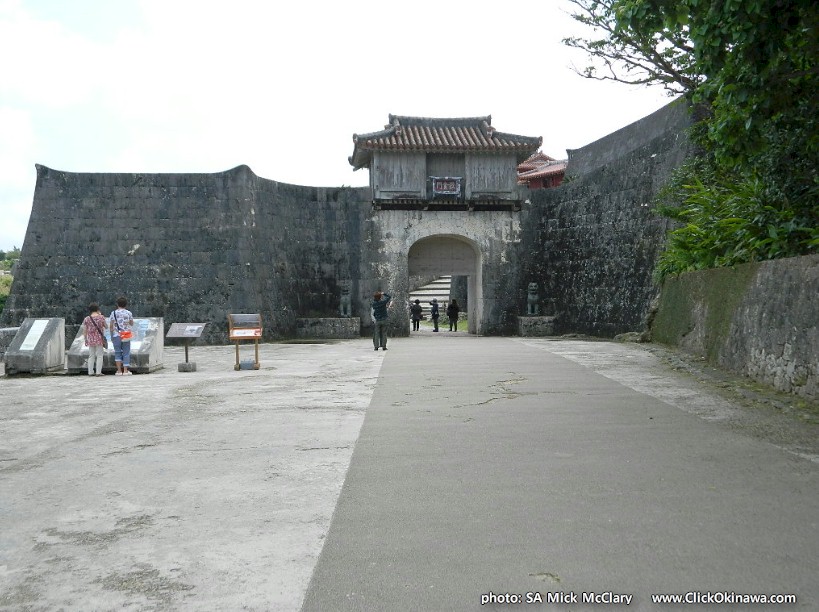
|

|

|
ClickOkinawa.com 1996-2017
Webmaster: Mick McClary, Great Falls, Montana
The front gate of Shurijou. It was burned down during World War 2 and rebuilt in 1974. It is an arched gate with double swinging doors, constructed within the castle's stoneblock wall. A 3×2 bay lookout turret is built on top of the gate. The turret has a hip-and-gable roof irimoya yane (A hip-and-gable roof; in Japanese architecture the gable part is usually over the core area of the building), covered with pantile sangawarabuki, and rests on four stout circular transverse hari (beams) that extend beyond the stone blocks at the front and back of the gate. The corner posts and posts set at the front and rear openings are supported by transverse beams. Ties, nuki (a penetrating tie beam that extends from one pillar to another inside a temple or shrine building), inserted into the corners and the door posts, are less than a fourth of the distance between the flooring and the head penetrating ties kashiranuki (Horizontal head penetrating tie beams that are connected to the tops of pillars to make them secure. These tie beams may be inserted through the tops of pillars or set into carved-out trough-like sections on top of the pillars. They do not project outward beyond the corners. Both methods were used in early architecture, but by the mid-13th Century with the introduction of new ways of building from China, head penetrating tie beams began to project outward on both sides of the corner pillars). Two ties beams penetrate the corner posts. Boards set vertically enclose the turret. The rafters taruki (this is the simplest type of rafter, called 'common rafter' or 'base rafter'. It extends from the ridge *munagi 棟木, to the end of, or beyond the eave), rest on the penetrating ties.
This style of gate is unique to Okinawa.